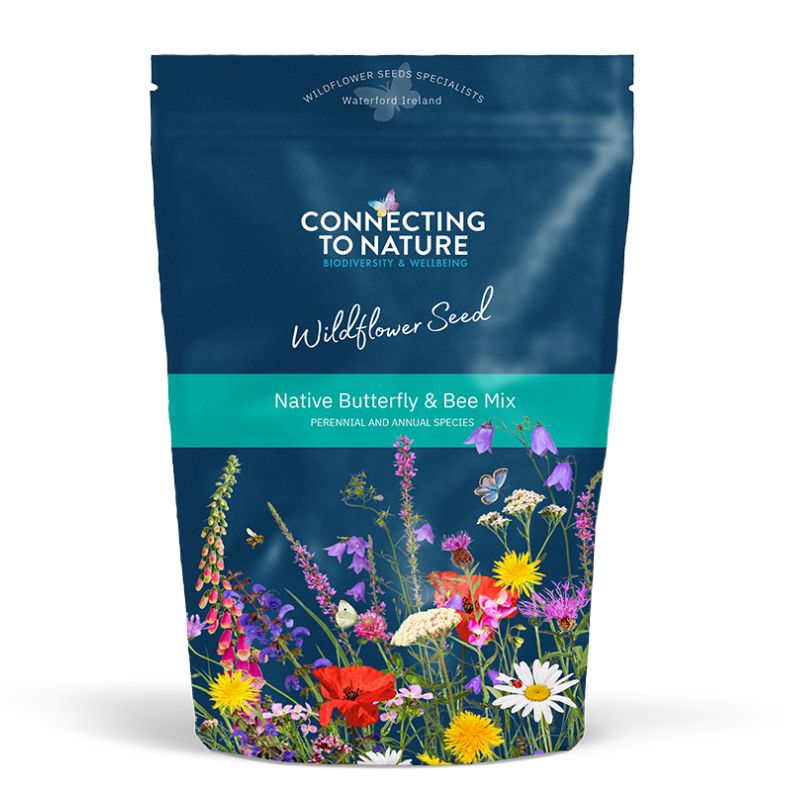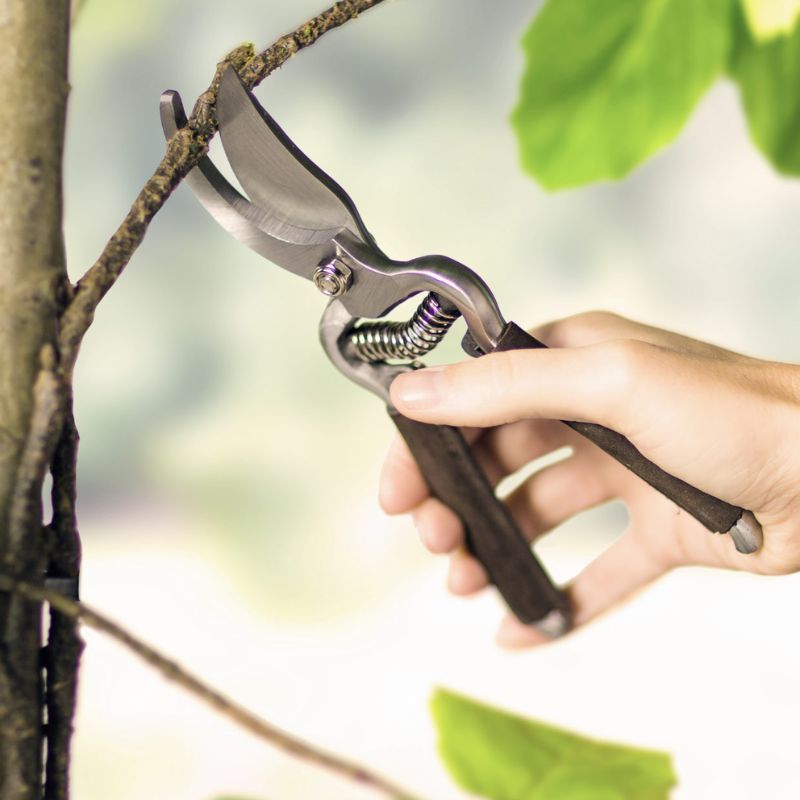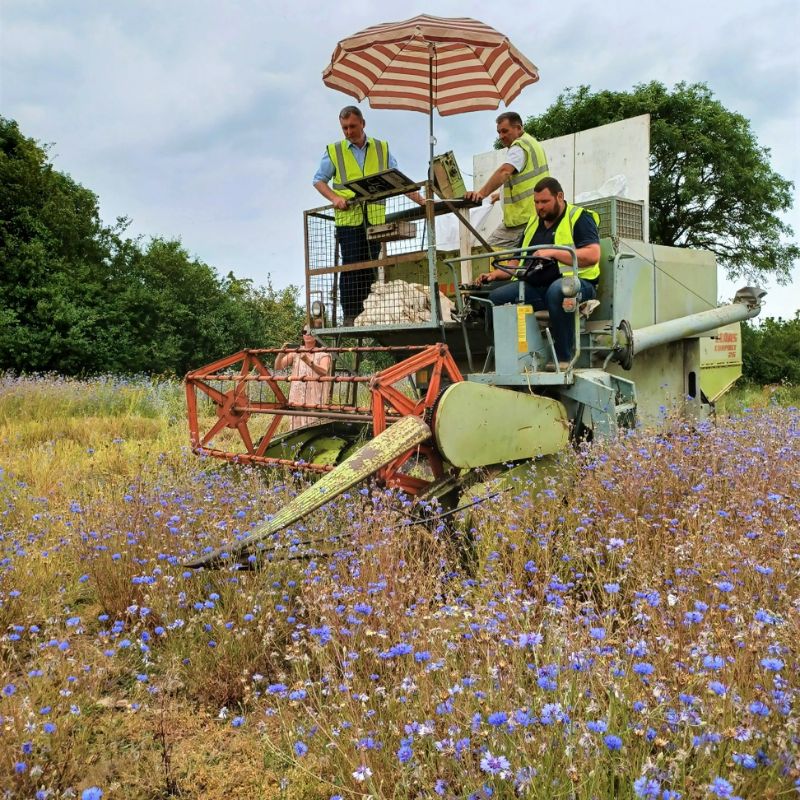Why Irish Famers Should Include Wildflower Mixtures in their Sowing Plans
When farmers sit down to plan their crops, wildflowers are probably not at the top of their agenda, if indeed they feature at all. However, farmers looking at the “bigger picture” should consider putting an area aside for wildflowers if only to contribute to the global benefits for the environment.
On closer examination, though, farmers might realise that the inclusion of wildflowers in their cropping plan brings immediate and tangible benefits to their farms in addition to the widely understood benefits for the environment.
Wildflowers: especially native Irish wildflowers provide vitally important habitat for pollinating insects. A floristically rich grass field margin will provide shelter, homes, food and nectar for essential pollinating insects and a vast variety of wildlife. Every farmer should find out how to create a sustainable, pollinator-friendly wildflower meadow, no matter what size and include this area in the cropping plan.
There are over 1000 different species of pollinating insects in Ireland all of which need nectar sources. Many of these insects may have specific nectar requirements associated with certain Irish native wildflowers which they cannot obtain from cultivated flowers or “foreign” wildflowers. Therefore, it is important to sow native wildflower seed on your farm.
Moreover, farmers represent the front line in terms of reliance on the vital pollinators for their crops. Nearly all fruit, most vegetables and many agricultural crops rely on bees, flies, and butterflies to transfer pollen between flowers and fertilise crops. Without insect pollination, many food plants that we grow in our gardens cannot complete the pollination process and will not produce fruits or vegetables.
Intensification of agriculture and insecticides have contributed to the massive decline in pollinating insects, especially bees. Now farmers can redress the balance in favour of pollinating insects by sowing bee-friendly wildflower seed mixtures.
Drilling grass margins with native wildflowers affords many additional benefits, especially on arable farms. Grass margins enhanced with wildflowers can mitigate the incursion into the crop of weed grasses such as sterile brome and blackgrass. They also provide valuable habitat for insects that predate pest species. Many insects live or hibernate in floristically rich grass margins.
Ladybirds (Ladybugs), Lacewings and some Pirate Bugs will all consume aphids in the fields adjacent to these margins. Spiders and some wasps predate pests of Brassicas such as Cabbage Flea Beetle. Some caterpillars such as the Cabbage Looper Caterpillars (a moth larvae) are predated by parasitic wasp larvae which will emerge from flower-rich grass margins. The presence of insects and seeds will attract birds and small mammals, which will attract predators such as owls and kestrels. The birds will also usefully feed on pests in the adjacent crops such as the caterpillars mentioned above.
Careful siting of wildflowers will bring enhanced benefits to pollinators and reduce land requirements for this purpose. Research has shown that just 1.25 – 2.5ha of wildflowers per 100ha of crops supports significant populations of pollinating and other beneficial insects.
Co-locating habitats will provide extra benefits. “Sandwich margins” alongside hedgerows is a great example. The flowers of hedgerow species such as hawthorn and blackthorn provide a rich source of nectar in early spring. A strip of tussocky grasses will afford shelter and hibernation venues for beneficial insects and small mammals. Then nearest the crop, a strip of native wildflowers or a wildflower meadow mixture is the icing on the cake. The wildflowers will supply nectar for pollinators, so between these three adjacent habitats, all the requirements of a large and diverse range of wildlife are catered for.
Often farmers overlook the opportunity to establish native wildflowers in awkward or unproductive areas on their farms. That awkward corner in a silage field, the part of a field that floods every winter or that piece of land around a telegraph pole or pylon could all be usefully planted with wildflowers. Even wavy hedge borders could be straightened by sowing a flower-rich margin adjacent to it.
Adding native wildflowers to a mixture of tussock forming grasses such as Cocksfoot, Tall and Meadow Fescues can make the ideal beetle bank. This can result in increased crop yields and a significant reduction in the expense of pesticides when sown in strips across larger fields. These strips also act as wildlife corridors, particularly if the ends meet with hedgerows or copses, thus providing a continuous habitat for pollinators and other beneficial wildlife.
A large scale six-year study on arable farms in the UK sponsored by the Campaign for the Farmed Environment (CFE) found that by taking between 3% and 8% of field edges out of production and converting them to pollinator-friendly wildflower meadows resulted in increased crop yields on the farms studied. In fact, in some insect-pollinated crops such as field beans, yields increased by as much as 35%!
Establishing nectar and food plants for pollinators as part of your cropping plan is well worthwhile. In fact, it could be described as a “win-win” measure!














